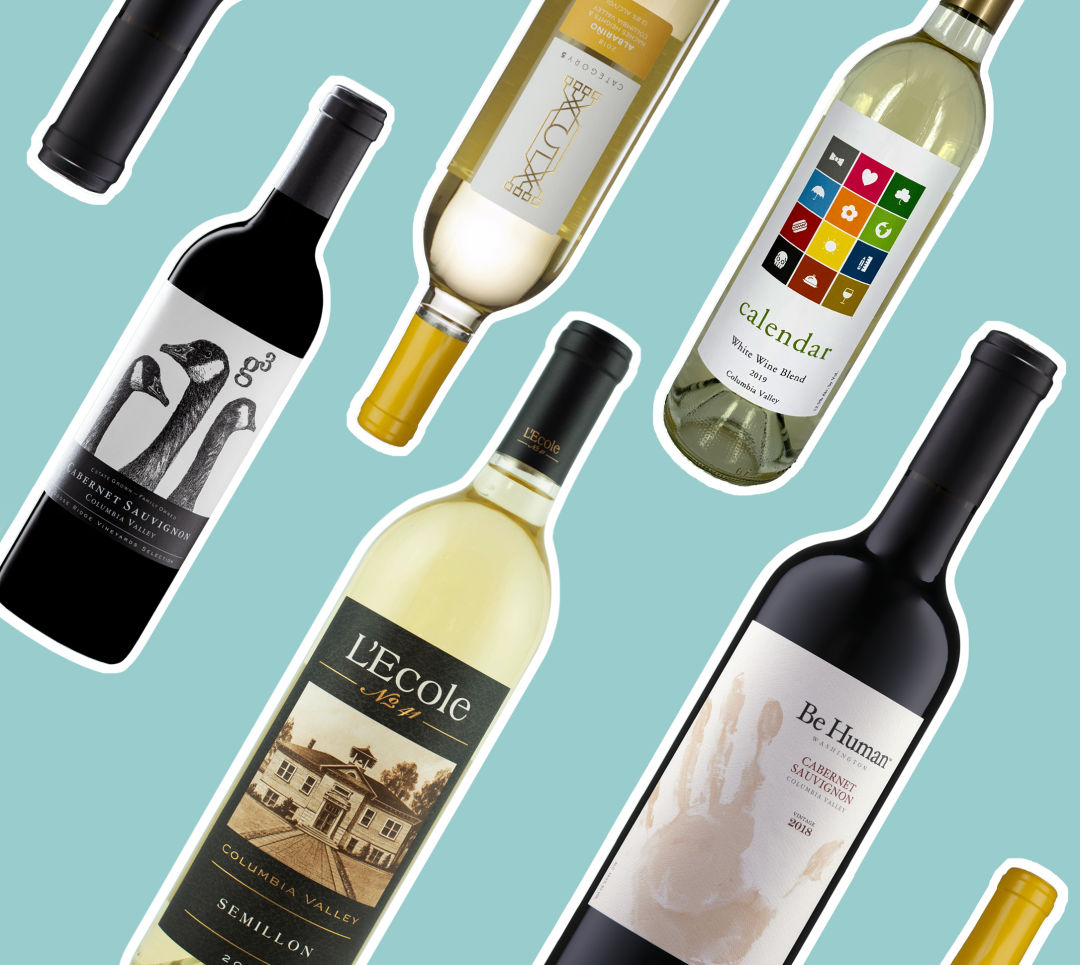5 Great Washington Wines for $18 and Under

Image: Courtesy the wineries and Seattle Met Composite
Diversity and value are two of Washington wine’s strengths. The Columbia Valley, by far Washington’s largest wine region, grows over 80 varieties. Five make up the majority of production—cabernet sauvignon, chardonnay, riesling, merlot, and syrah. But niche offerings, such as the sémillon, muscat, and albariño listed below, can yield some of the state’s most exciting wines.
Washington’s value proposition meanwhile is simple. More name recognition leads to more expensive land prices leads to spendier wine grapes. The end result is bottles that take a bigger bite out of your wallet. With Washington wine largely under the national radar, we can still reap the rewards.
L'Ecole No. 41 2019 Semillon Columbia Valley $15
On the Nose: lanolin, citrus, fig.
On the Palate: textural richness backed by a zing of acid.
Why It's Special: L’Ecole has been carrying the banner for this variety for decades and has seldom raised it higher.
Goose Ridge 2018 g3 Estate Grown Family Owned Cabernet Sauvignon Columbia Valley $15
On the Nose: black currant, dried herb.
On the Palate: intense black fruit flavors.
Why It’s Special: This brand is one of Washington’s best kept secrets, though with offerings this good, that can’t last long.
Calendar 2019 White Wine Yakima Valley $14
On the Nose: mandarin orange, flower, honey.
On the Palate: light-on-their-feet flavors that drink almost bone-dry.
Why It’s Special: This Muscat-based wine shows balance and depth not often associated with the variety.
Be Human 2018 Cabernet Sauvignon Columbia Valley $17
On the Nose: black cherry, barrel spice.
On the Palate: rich dark fruit with plenty of tannic structure.
Why It's Special: It brings uncommon seriousness for a wine at this price.
Category 5 Albariño Naches Heights and Columbia Valley 2018 $18
On the Nose: lemon zest, tangerine, watermelon rind.
On the Palate: chock full of flavor, backed by impressive acidity.
Why It’s Special: This is a new winery working with a variety less frequently seen in the state. (It'll be released to the general public on February 1.)




